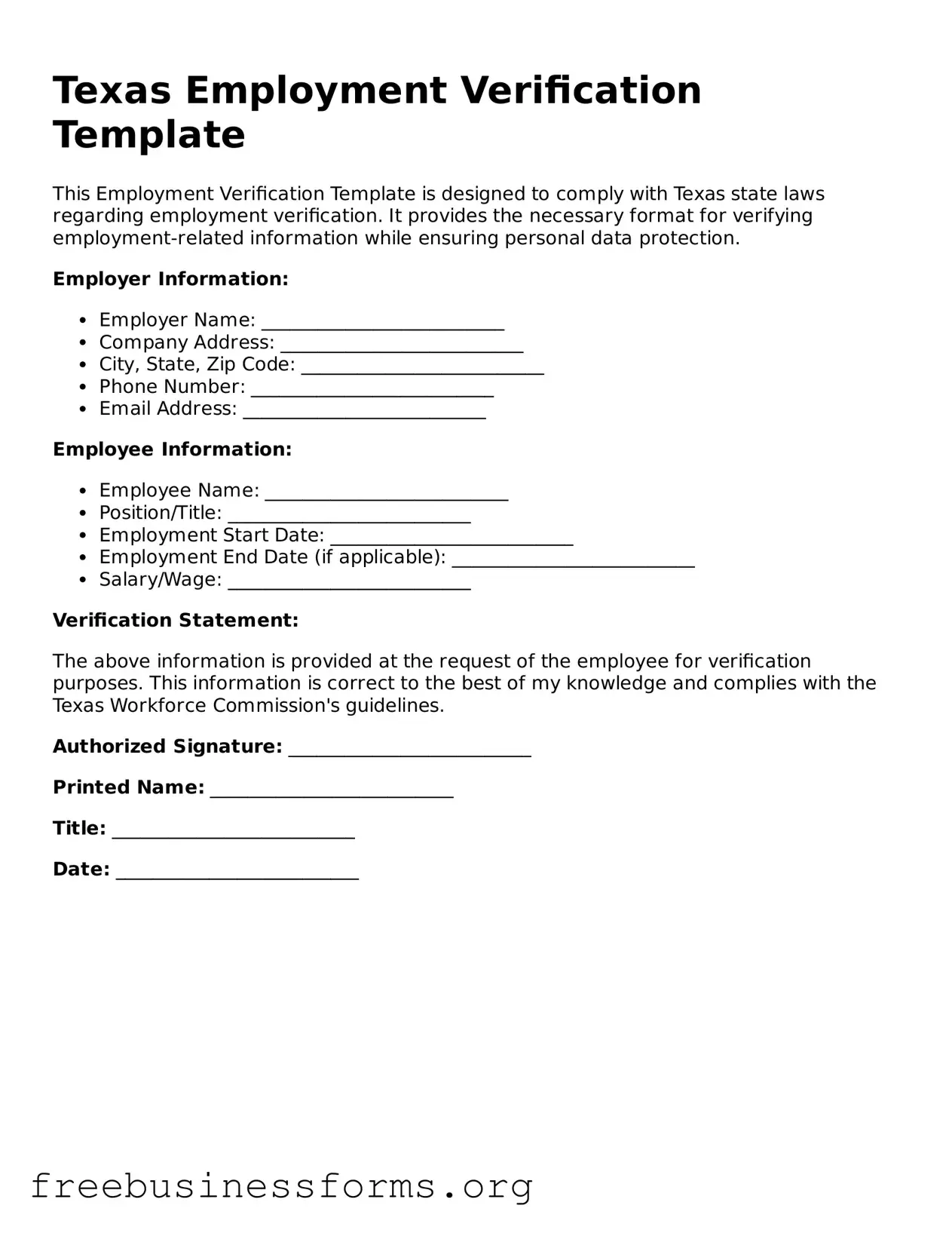Texas Employment Verification Template
This Employment Verification Template is designed to comply with Texas state laws regarding employment verification. It provides the necessary format for verifying employment-related information while ensuring personal data protection.
Employer Information:
- Employer Name: __________________________
- Company Address: __________________________
- City, State, Zip Code: __________________________
- Phone Number: __________________________
- Email Address: __________________________
Employee Information:
- Employee Name: __________________________
- Position/Title: __________________________
- Employment Start Date: __________________________
- Employment End Date (if applicable): __________________________
- Salary/Wage: __________________________
Verification Statement:
The above information is provided at the request of the employee for verification purposes. This information is correct to the best of my knowledge and complies with the Texas Workforce Commission's guidelines.
Authorized Signature: __________________________
Printed Name: __________________________
Title: __________________________
Date: __________________________
